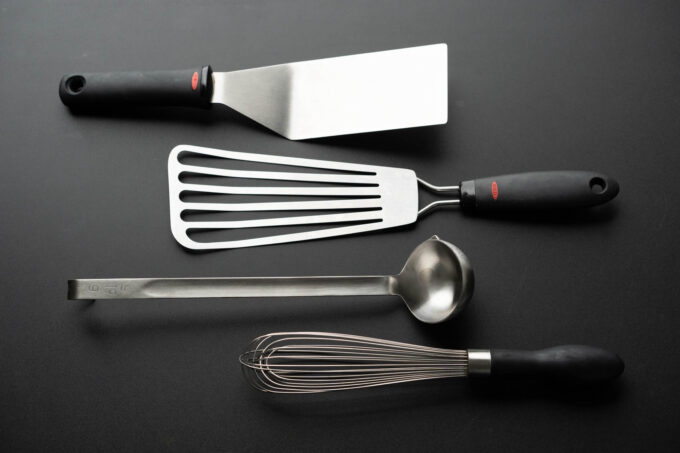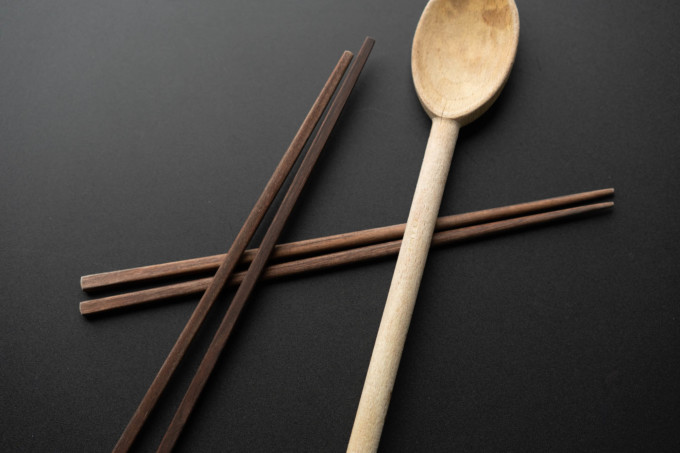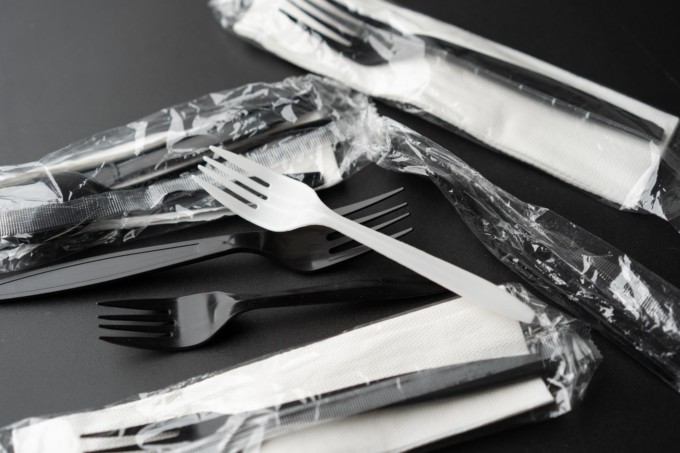Your Cart is Empty
FREE Worldwide Shipping! | +1 365 654 6605
FREE Worldwide Shipping! | +1 365 654 6605
June 27, 2023 5 min read

Cooking is a wonderful way to express creativity and nourish our bodies with delicious meals. However, it's important to consider not only the taste and presentation of our food but also the safety and health implications of the utensils we use in our kitchens. In this ultimate guide, we will explore the different materials used in kitchen utensils, focusing on the safest options for non-toxic cooking. From stainless steel to silicone and wood, we will discuss the benefits and considerations of each material to help you make informed choices for a healthier kitchen environment. Before we dive into the specific materials, let's first understand what makes a cooking utensil non-toxic. A non-toxic utensil is made from materials that do not release harmful chemicals or toxins when exposed to heat or food. These utensils are designed to be safe for cooking, baking, and food preparation, ensuring that no unwanted substances leach into our meals. By choosing non-toxic kitchen utensils, you can minimize the risk of chemical exposure and create a healthier cooking environment for you and your loved ones. Stainless steel is a popular choice for kitchen utensils due to its durability, heat resistance, and non-reactive properties. It is made from a combination of metals, including iron, chromium, and nickel. Food-grade stainless steel, which contains at least 11% chromium, is highly resistant to rust, corrosion, and staining. It is also non-reactive, meaning it does not release any chemicals or flavors into your food, even when exposed to high temperatures. Stainless steel utensils are versatile and can be used for various cooking methods, such as sautéing, stirring, and serving. They are easy to clean and maintain, making them a reliable choice for everyday use in the kitchen. When purchasing stainless steel utensils, look for high-quality brands that use food-grade stainless steel to ensure the safety and longevity of your utensils. Silicone has gained popularity in recent years as a non-toxic alternative to traditional cooking materials. It is made from a synthetic polymer that is heat-resistant and flexible. The FDA has deemed food-grade silicone safe for use in cooking, baking, and food storage. Food-grade silicone can withstand high temperatures, typically up to 500°F, making it suitable for a wide range of cooking methods. One of the advantages of silicone utensils is their non-stick properties, which make them ideal for use with delicate foods and non-stick cookware. Silicone is also easy to clean and dishwasher-safe. However, it's important to choose silicone utensils that are labeled as "food grade" and from reputable manufacturers. Some lower-quality silicone products may contain fillers or additives that can degrade over time and potentially leach chemicals into your food. Wooden utensils have been used for centuries and continue to be a popular choice for those seeking non-toxic options. Wood is a natural and renewable material, making it an environmentally friendly choice for kitchen utensils. When selecting wooden utensils, look for those labeled as "food-safe" and made from hardwoods such as beechwood, teak, or maple. Wooden utensils have a closed-grain structure, which means they have small pores that repel stains and bacteria. They are gentle on non-stick cookware, as they do not scratch or damage the surface. However, it's important to note that wood is more porous than other materials, so proper care is essential. After use, wooden utensils should be thoroughly washed and dried to prevent mold growth. Periodically oiling or waxing the wood can help maintain its condition and prolong its lifespan. While we have discussed the safest materials for non-toxic kitchen utensils, it's equally important to be aware of materials to avoid. Plastic utensils, especially those made from low-quality or unknown plastics, can pose risks to our health and the environment. Plastics are derived from fossil fuels and can contain additives, such as Bisphenol A (BPA), which has been linked to various health concerns. Plastic utensils have the potential to release harmful chemicals when exposed to heat or acidic foods. Over time, they can degrade and leach toxins into your food, compromising its safety. To minimize your exposure to harmful chemicals, it is best to steer clear of plastic utensils and opt for safer alternatives like stainless steel, silicone, or wood. Cookware is another essential component of a non-toxic kitchen. To ensure the safety of your cookware, it's important to choose materials that are non-reactive and do not release harmful substances into your food. Here are some of the safest materials for cooking pans: Stainless Steel: Similar to stainless steel utensils, stainless steel cookware is a safe and durable option. Look for high-quality stainless steel pans with an aluminum or copper core for even heat distribution. Ceramic: Ceramic cookware is made from natural materials and coated with a non-toxic glaze. It is non-reactive and provides excellent heat retention. However, be cautious of ceramic cookware with non-stick coatings, as they may contain chemicals. Copper: Copper cookware offers superior heat conductivity and precise temperature control. However, pure copper is reactive, so look for copper pans lined with a non-reactive material like stainless steel. Cast Iron: Cast iron pans are known for their excellent heat retention and even heat distribution. They can leach small amounts of iron into your food, which can be beneficial for some individuals. However, those with iron overload should use caution and consult with a healthcare professional. Non-Stick and Aluminum: While non-stick and aluminum cookware are generally regarded as safe, it's important to use them properly and avoid scratching or overheating. Damaged non-stick coatings can release harmful chemicals, so it's best to replace them if they show signs of wear. When selecting cookware, prioritize high-quality brands that prioritize safety and have certifications such as FDA compliance or food-grade materials. Additionally, follow proper care and maintenance instructions to ensure the longevity and safety of your cookware. Choosing non-toxic kitchen utensils and cookware is essential for creating a healthier cooking environment. By opting for materials like stainless steel, silicone, and wood, you can minimize the risk of chemical exposure and enjoy the benefits of safe and durable utensils. Avoiding materials like plastic and being mindful of the quality and maintenance of your cookware can further enhance the safety of your kitchen. Remember, a well-equipped kitchen with non-toxic utensils is not only good for your health but also for the quality and enjoyment of your culinary creations. List of References:
What Makes a Cooking Utensil Non-Toxic?
Stainless Steel: The Durable and Non-Reactive Option

Silicone: Heat-Resistant and Flexible
![]()
Wood: Natural, Sustainable, and Non-Scratching

Materials to Avoid: Plastic and its Risks

The Safest Cookware Materials: Choosing Non-Toxic Pans
Conclusion
Be the first to know about upcoming sales and promos. Get a 10% discount coupon when you subscribe!